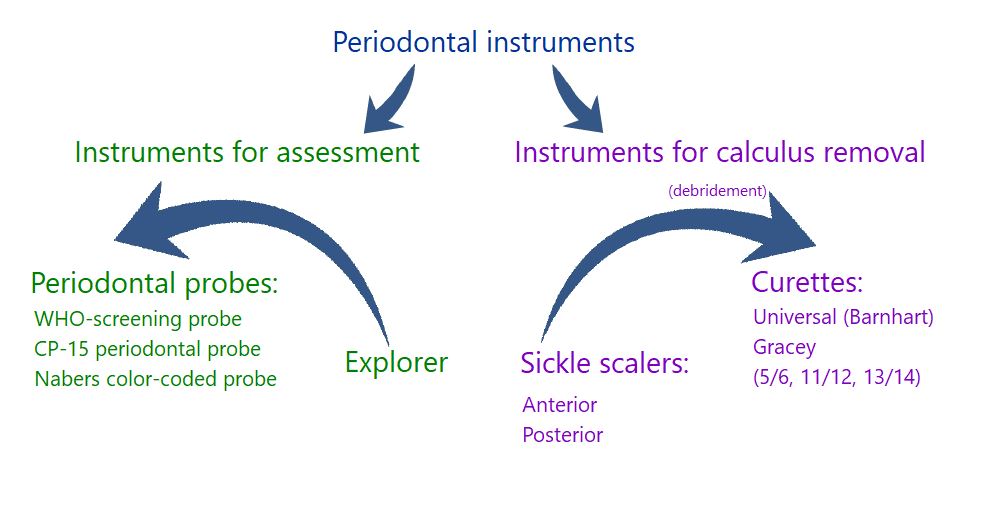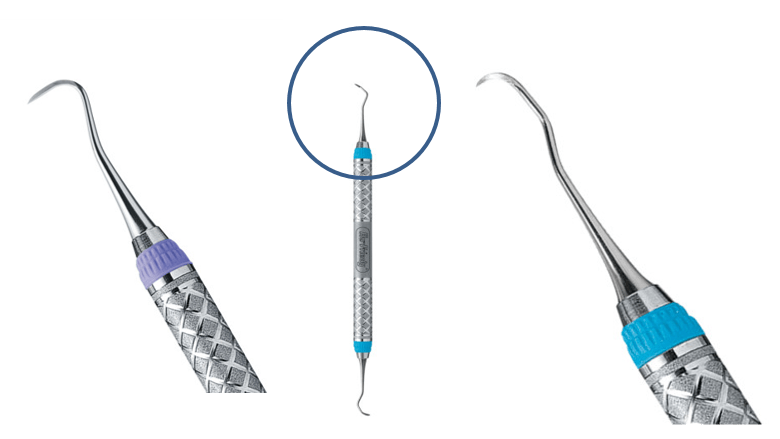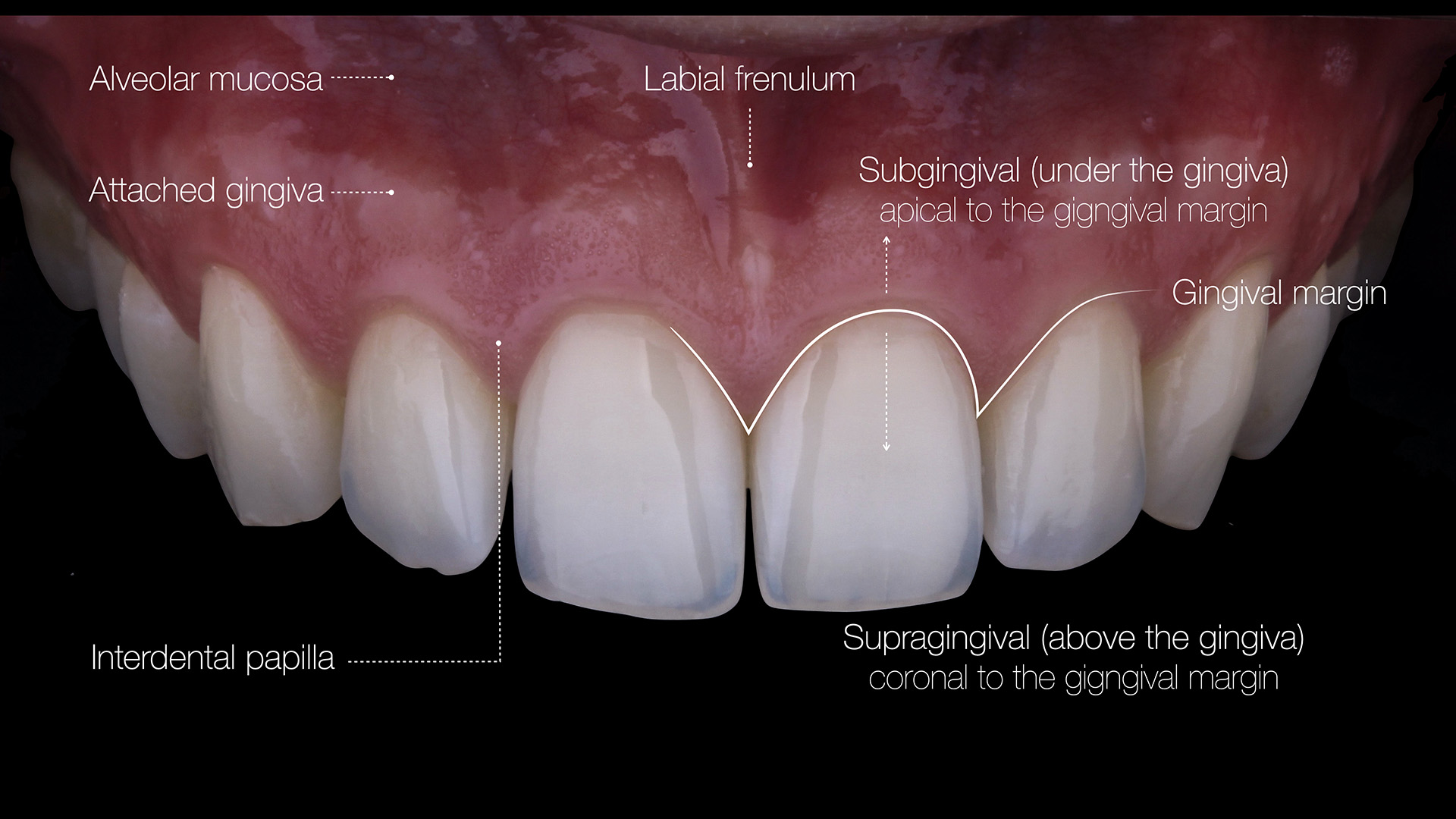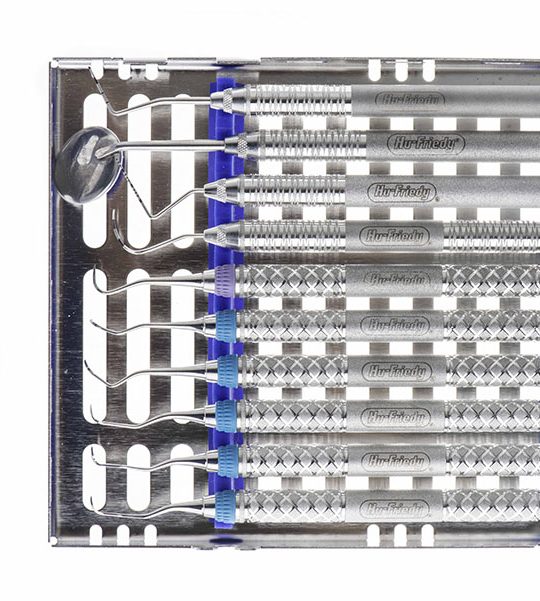Periodontal cassette
Right handed operator
Periodontal cassette
Contains a set of instruments used for diagnosis, treatment and maintenance of patients with gingivitis and periodontal diseases. The set of instruments is used in training of students and continuing education (basic instrumentation) of dental professionals.

Classification of the instruments
Periodontal instruments
Instruments in the cassette can be classified into two categories:
Instruments for assessment & instruments for calculus removal (debridement).

Sickle vs. curette
differentiation

Anatomic principles
supra vs. subgingival
Instruments for assessment
WHO probe is used for screening purposes and registration of Periodontal Screening Record (PSR). It has a ball-tipped end and is color-coded with a black band extending from 3.5mm to 5.5mm.
The periodontal probe is an instrument of evaluation in assessing the periodontal/peri-implant health of the tissues. There are two basic types: calibrated & furcation probe.
Periodontal probes (stainless steel and plastic) have blunt working ends and millimeter increments for registration of intraoral measurements such as probing depth (PD), gingival recession (GR), clinical attachment loss (CAL), etc. Plastic probes are preferred for assessment of implants.
Furcation probes are curved in shape and used to evaluate horizontal attachment loss in the furcation areas. Naber’s (2N) probe is a color-coded probe with black bands from 3 to 6mm and 9-12mm.
The dental explorer is the instrument that provides the best tactile information. It Is used to locate hard tooth deposits, surface irregularities, defective margins and carious lesions. Explorers are available in a variety of design types. The 11/12-type explorer is a paired explorer with mirror end image working ends. It is universal instrument that can be adapted to all anterior and posterior teeth. Its long complex functional shank enables access to deep pockets.


Instruments for calculus removal
Supragingival and subgingival debridement
Sickle scalers (anterior and posterior) are instruments with a sharp pointy tip and two cutting edges. They are manly used for removal of supragingival hard deposits (calculus).
Curettes (universal and area specific) are instruments with a rounded tip indicated as a toe. Universal curettes have two cutting edges, while area-specific (Gracey’s) curettes have one cutting edge. Both instruments are mainly used for subgingival debridement. Universal curette is the universal instrument that may be adapted to all anterior and posterior teeth. Gracey’s curette is area-specific, which indicates that each instrument is designed for use only on certain teeth and certain tooth/root surfaces. For this reason, several area-specific curettes can be used to instrument the entire mouth.









